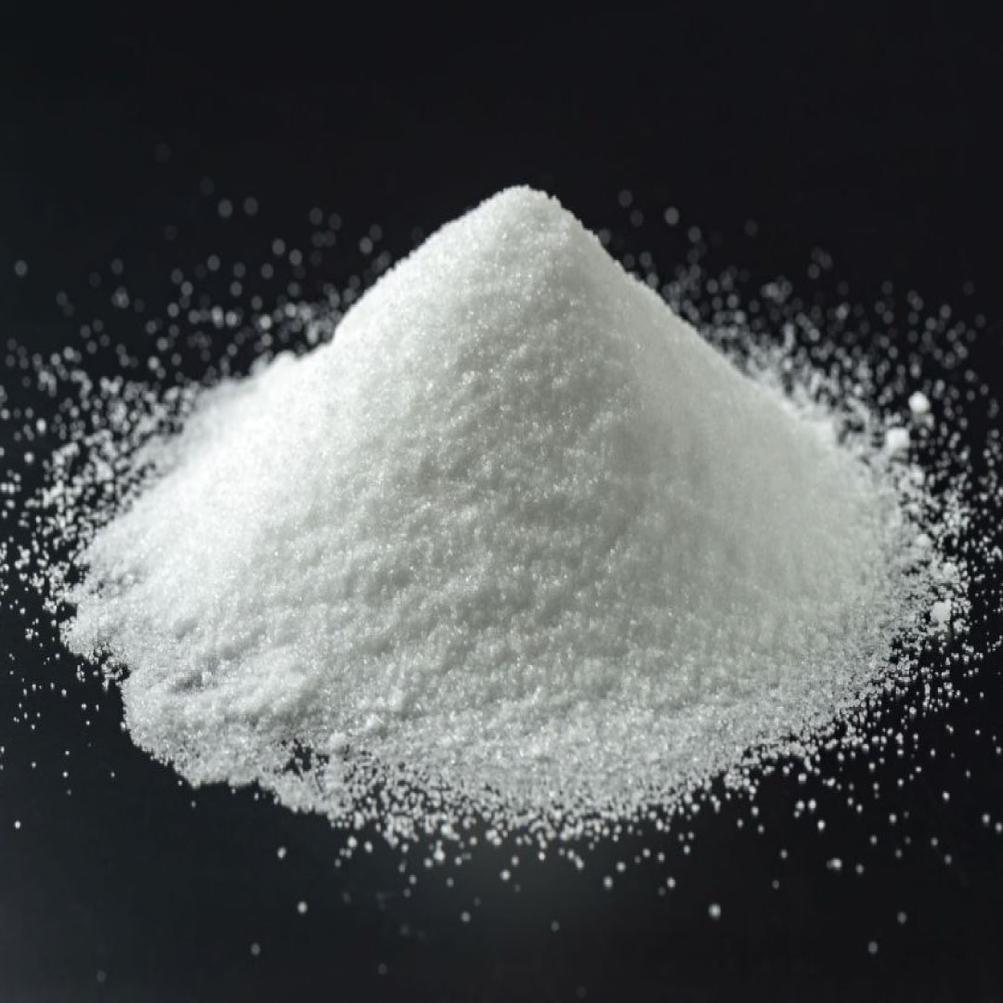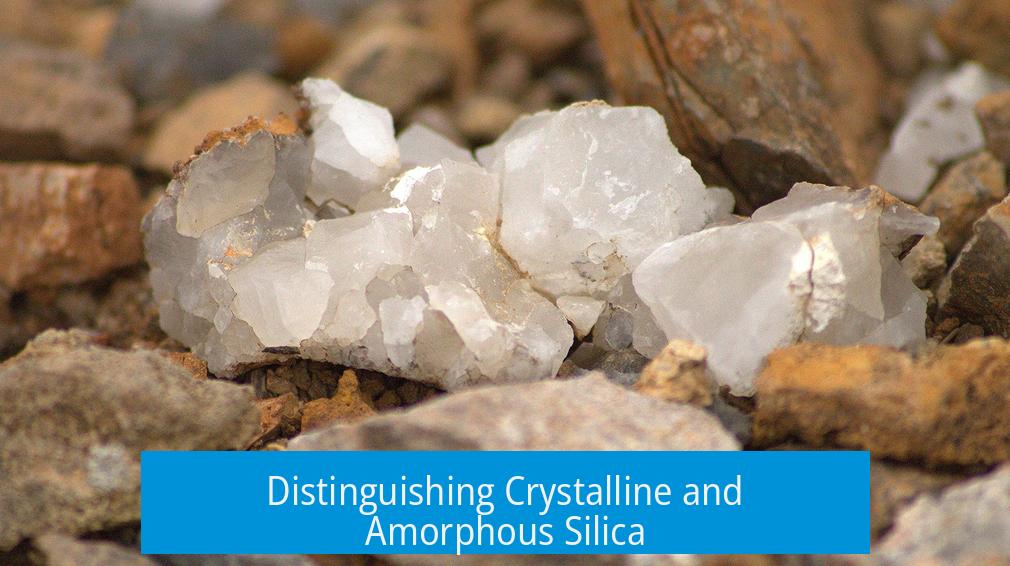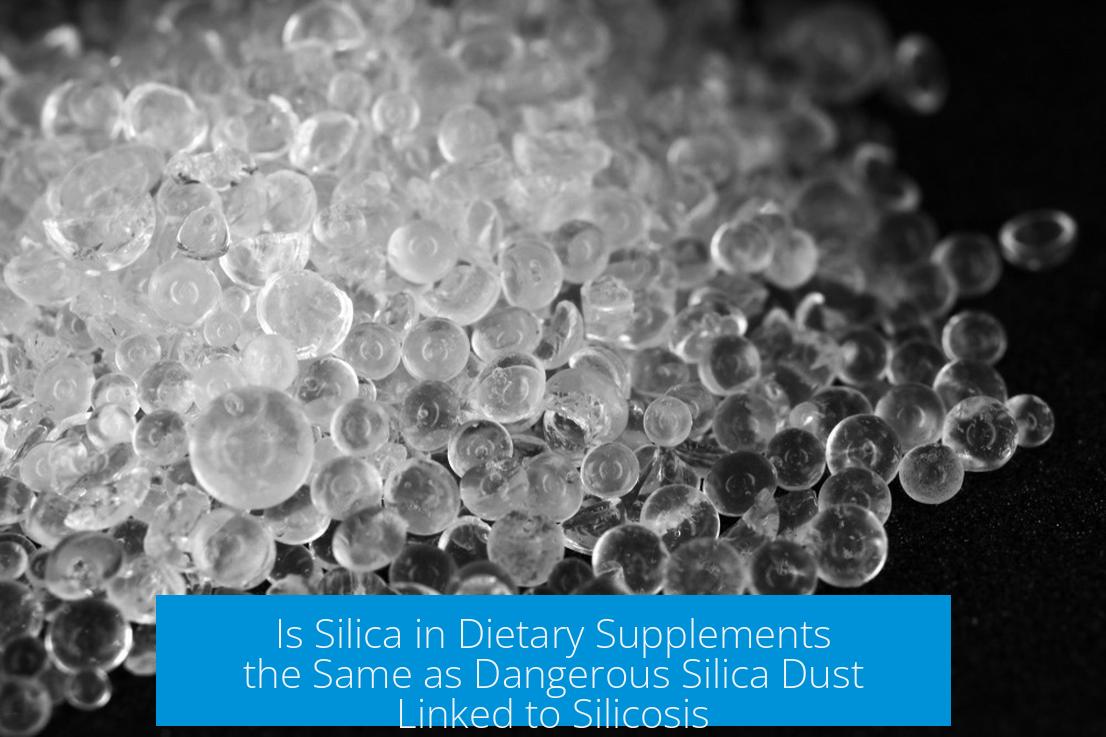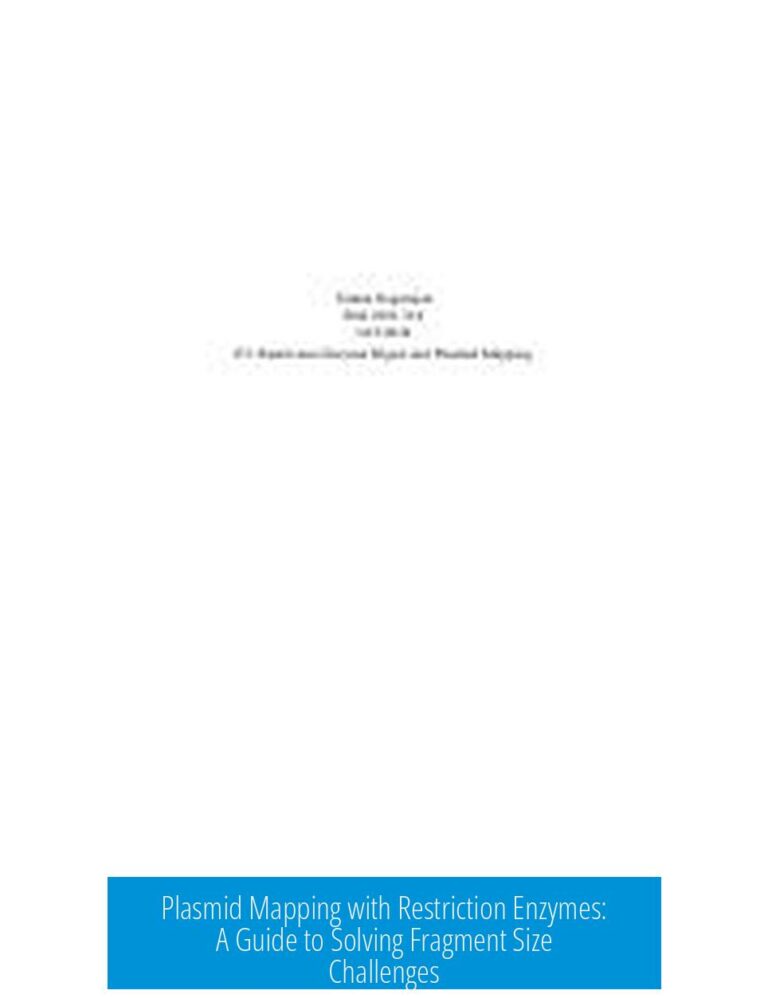Is the Silica in Dietary Supplements the Same Dangerous ‘Silica Dust’ That Can Cause Silicosis if Inhaled?

The silica found in dietary supplements is not the same hazardous “silica dust” linked to silicosis. The toxic form of silica causing lung damage is crystalline silica. In contrast, supplements contain amorphous silica, a safer, non-crystalline form that poses minimal inhalation risk and is widely used in edible and pharmaceutical products.
Chemical Composition of Silica in Supplements
Silica is chemically known as silicon dioxide, represented by the formula SiO2. Both forms, crystalline and amorphous, share this chemical formula but differ in structure and properties.
Dietary supplements generally use silicon dioxide (SiO2) as an anti-caking agent or filler. This silica is almost always amorphous instead of crystalline. The amorphous variation lacks the rigid crystal structure that makes crystalline silica harmful when inhaled.
Distinguishing Crystalline and Amorphous Silica

- Crystalline Silica: Has a defined crystal lattice. Its microscopic particles are sharp and rigid.
- Amorphous Silica: Lacks crystalline order. The structure is random and non-rigid.
Crystalline silica is the form responsible for silicosis, a lung disease caused by inhaling fine, sharp particles that scar lung tissue. The damage arises from the physical shape and size of the particles, which cause cellular injury.
Amorphous silica, however, does not have these sharp crystal edges and is considered far less harmful. It cannot rupture cells in the same way crystalline silica can. Therefore, amorphous silica is classified as safe for ingestion and topical use.
Silicosis Risk and Dietary Silica
The development of silicosis necessitates inhaling crystalline silica dust over time. Symptoms relate to lung tissue inflammation and scarring. The key hazard is airborne crystalline particles, not ingestion of silica.
Dietary supplements containing amorphous silica present an extremely low risk for silicosis. The particles are:
- Not crystalline
- Typically too large or embedded in other materials
- Ingested rather than inhaled, bypassing lung exposure
Furthermore, amorphous silica in supplements is rarely present as a fine, dry powder airborne enough to pose inhalation risks similar to “silica dust” in industrial settings.
Particle Size and Physical Form as Toxicity Drivers
Particle size critically influences silica toxicity. Silicosis arises from microscopic particles that can penetrate deep into lung tissue. These particles must be:
- Small enough to reach alveoli
- Sharp or rigid enough to damage cells
- Persistent enough to cause chronic inflammation
In contrast, silica particles in supplements are typically aggregated, amorphous, and incorporated within capsules or tablets. They do not become airborne dust of suitable size or shape for inhalation into the lungs.
Regulatory and Industry Context
The supplement industry faces criticism for inconsistent regulation. Labels may not always specify silica type or quantity accurately. However, industrial crystalline silica is costly and hazardous. Manufacturers prefer cheap, safe amorphous silica to avoid liability and meet safety standards.
Random contamination of crystalline silica into supplements is highly unlikely due to different procurement sources and manufacturing controls.
Common Safe Uses of Amorphous Silica
Amorphous silica finds approved use in many edible and pharmaceutical products, demonstrating safety in consumption and topical applications. Examples include:
- Toothpaste, where it acts as a gentle abrasive
- Pharmaceutical suspensions and liquid drug carriers
- Food products as an anticaking agent
These applications entail different regulatory and safety validations than industrial silica dust, further confirming amorphous silica’s low hazard profile.
Summary of Differences
| Aspect | Crystalline Silica Dust | Silica in Dietary Supplements (Amorphous) |
|---|---|---|
| Chemical Structure | Ordered, sharp crystals | Non-crystalline, random structure |
| Particle Size | Microscopic and respirable | Larger, often aggregated |
| Primary Exposure Route | Inhalation | Oral ingestion |
| Health Risk | Silicosis, lung cancer, respiratory disease | No known silicosis risk |
| Regulatory Status | Regulated as hazardous material | Generally recognized as safe (GRAS) |
Practical Guidance
Consumers need not worry about silicosis from dietary supplements. Amorphous silica use in products is safe and has a long history without respiratory harm. Inhalation risk is negligible when taking supplements orally as intended.
However, handling silica powders extensively in dry, airborne form may present hazards. Industrial workers using crystalline silica require protective measures. This does not apply to supplement consumers.
Key Takeaways
- Silica in supplements is amorphous SiO2, not crystalline silica dust.
- Crystalline silica causes silicosis; amorphous silica lacks sharp crystals and is not linked to lung disease.
- Particle size and form determine silica toxicity; supplements contain non-respirable, safe forms.
- The supplement industry uses amorphous silica for safety and cost reasons; crystalline silica is unlikely present.
- Amorphous silica is widely used in food and pharmaceuticals without respiratory harm.
Is the silica in dietary supplements the same as the silica dust that causes silicosis?
No. Supplements contain amorphous silica, which is different from the crystalline silica that causes silicosis. Crystalline silica has sharp particles that damage lungs, while amorphous silica does not pose that risk.
Why is crystalline silica dangerous but amorphous silica is considered safe?
Crystalline silica has tiny, sharp crystals that can rupture lung cells if inhaled, leading to silicosis. Amorphous silica particles lack this sharp structure and are used safely in foods and medicines.
Can swallowing silica in supplements cause silicosis or lung damage?
Silicosis is caused by inhaling crystalline silica dust, not by swallowing silica. The silica in supplements is usually amorphous and ingested, so it does not cause lung damage like inhaled dust would.
Does particle size affect the safety of silica in supplements?
Yes. Toxicity depends on particle size and shape. The harmful silica dust has microscopic sharp particles, while silica in supplements is not in hazardous particle form or size.
Could contaminated supplements contain dangerous crystalline silica?
It is unlikely. Supplements generally use safe, amorphous silica due to cost and regulation, though industry oversight can be weak. Hazardous crystalline silica is rarely found in dietary products.





Leave a Comment